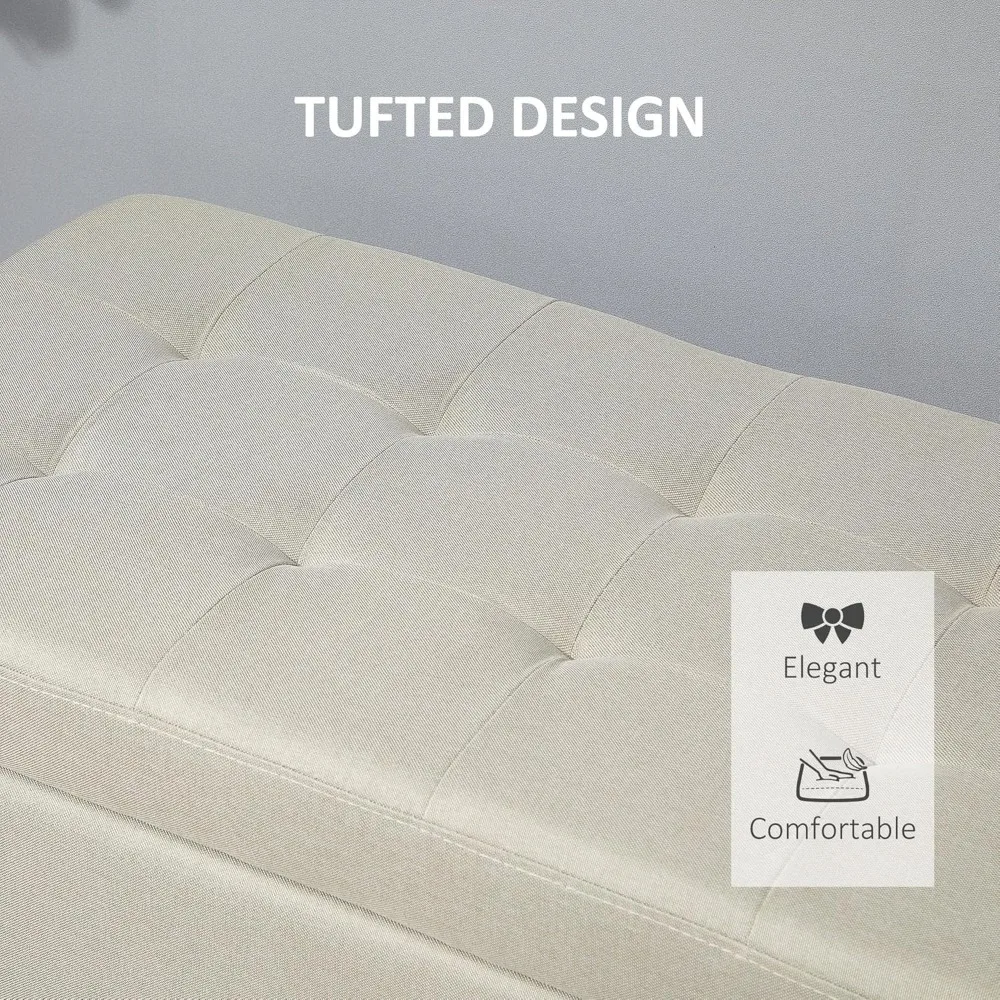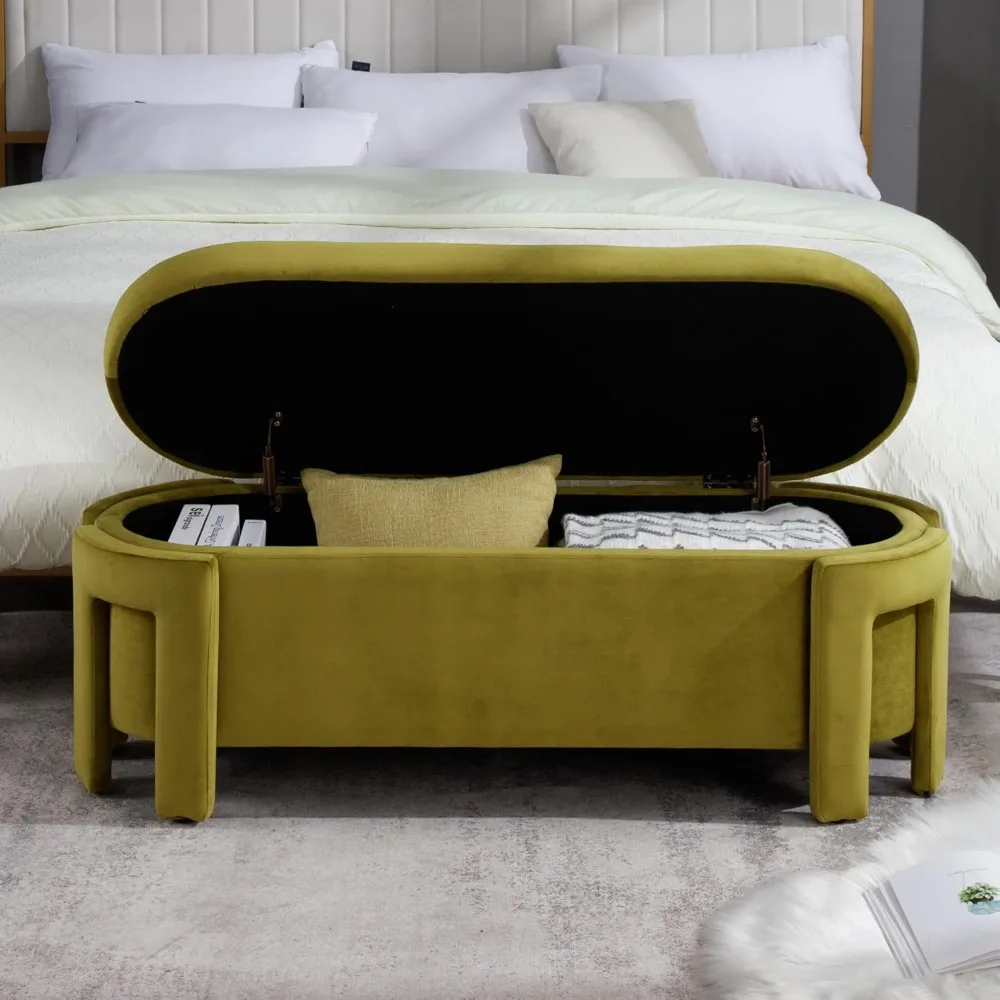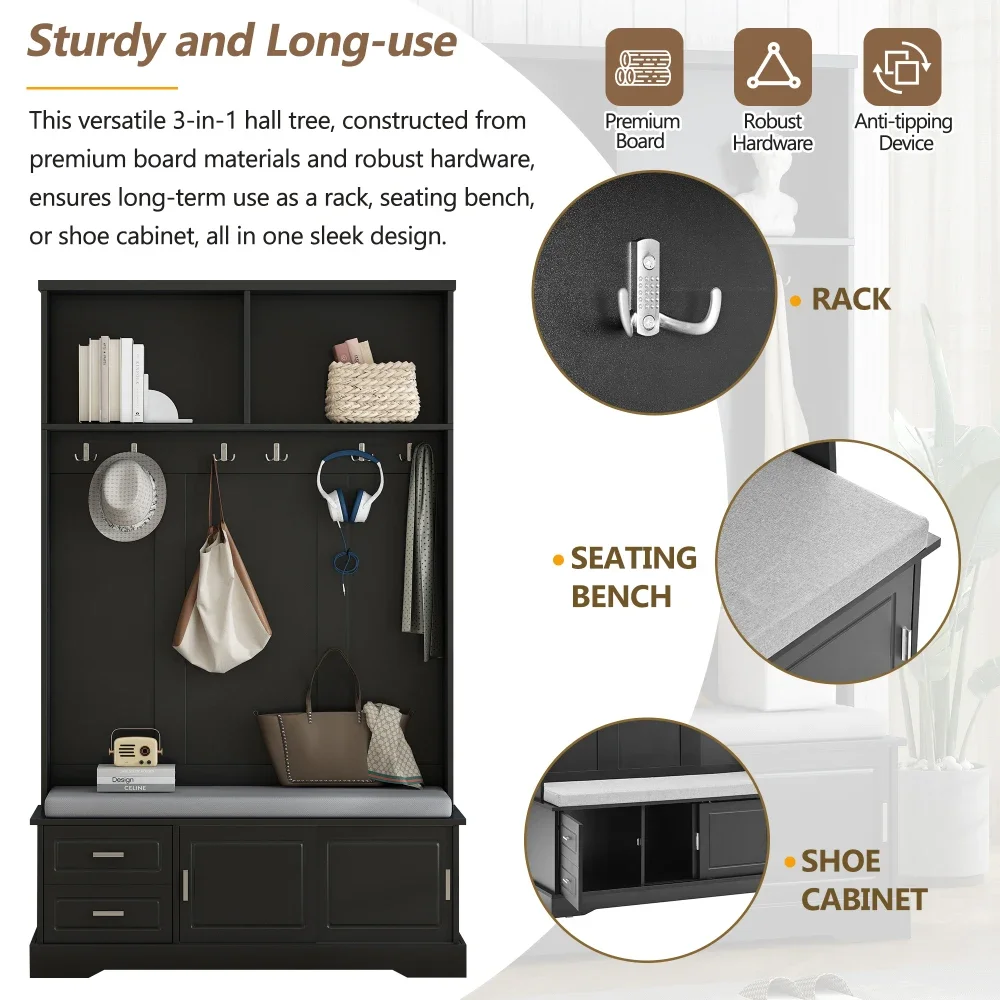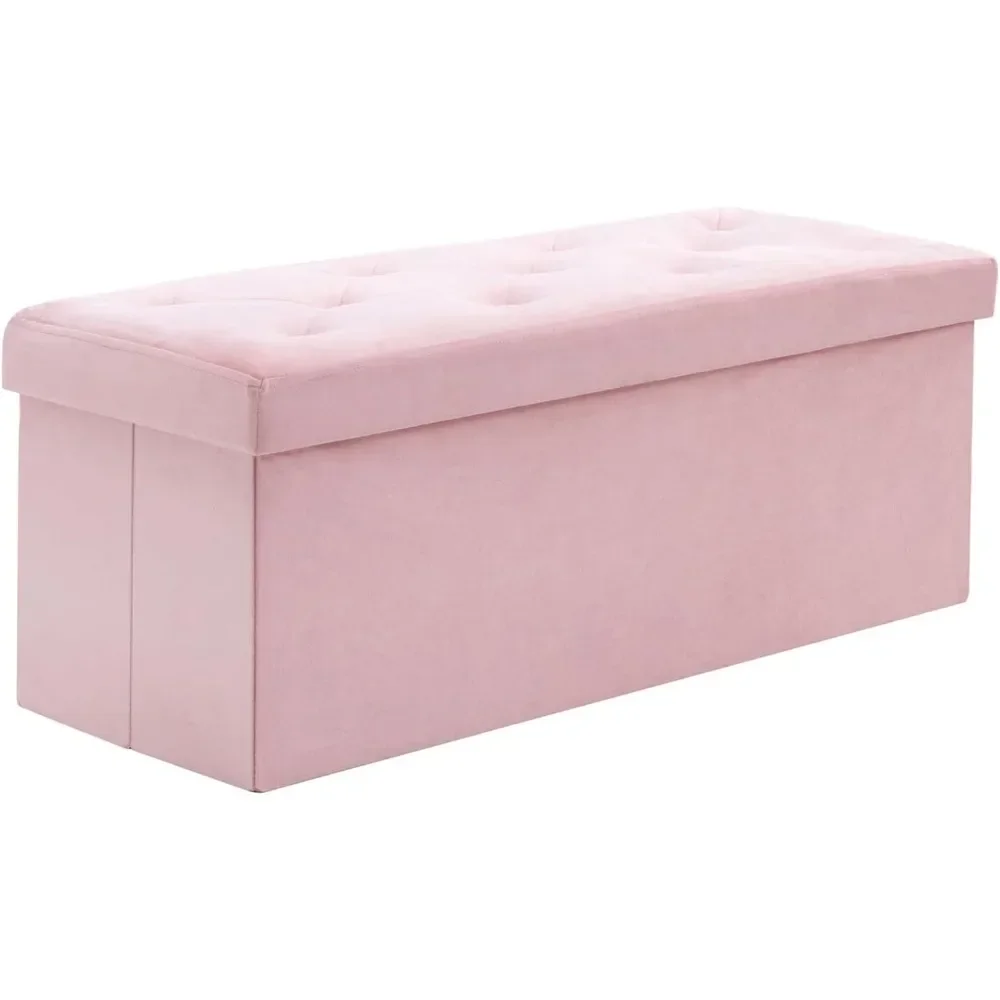Why a Bench is Essential for Narrow Entryways
Narrow entryways present unique challenges in homes of all sizes. These transitional spaces—typically less than 4 feet (1.2 meters) wide—serve as the first impression of your home while needing to function efficiently in limited square footage. The constrained dimensions often lead to cluttered, disorganized areas that fail to welcome guests or provide practical support for daily comings and goings.
A carefully selected bench transforms these challenging spaces into organized, functional areas with surprising efficiency. Unlike bulky furniture pieces, the right bench serves multiple purposes simultaneously: providing a place to sit while putting on shoes, creating storage for everyday items, and establishing a stylish focal point that enhances your home’s character. The best space-saving bench solutions combine these functional elements without overwhelming the limited footprint available.
For narrow entryways specifically, specialized bench designs offer tailored solutions that standard furniture simply cannot match. With thoughtful selection, even the most confined entry corridor can become an organized, welcoming space that sets the tone for your entire home. The transformation from cluttered passage to functional entryway isn’t just aesthetic—it fundamentally improves how you use your home every day. Exploring different narrow entryway bench options can reveal surprising possibilities for even the most challenging spaces.
Key Measurements and Space Planning for Your Entryway
Before selecting a bench, accurate measurements of your entryway are essential for success. Begin by capturing these critical dimensions:
- Total width: Measure the wall-to-wall distance at the narrowest point
- Available wall length: Determine the uninterrupted wall space where a bench could be placed
- Usable depth: Measure from the wall to the minimum required walkway space
- Ceiling height: Important when considering vertical storage solutions
Door clearance is particularly critical in narrow spaces. Allow at least 30 inches (76 cm) of swing space for any door to operate freely without bumping into your new bench. Similarly, maintaining a minimum walkway width of 36 inches (91 cm) ensures comfortable passage for all household members, including those carrying groceries or other items.
The maximum bench dimensions for your space will depend on these measurements. As a general rule, your bench depth should be 12-18 inches (30-45 cm) in narrow spaces, while length can vary based on available wall space. Creating a simple floor plan on graph paper—with 1 square representing 1 foot—can help visualize how different bench sizes would fit before making a purchase.
Making these measurements before shopping for a bench helps avoid the disappointment of choosing compact bench options that won’t actually work in your specific space. Taking time to plan properly ensures you’ll find a piece that fits perfectly and functions beautifully in your home.
Space-Optimized Bench Types for Narrow Entryways
Slim Profile Benches
Slim profile benches represent the most straightforward solution for narrow spaces with their reduced depth measurements of just 12-15 inches (30-38 cm). These streamlined designs maintain comfortable seating while minimizing their footprint. Look for models with tapered legs or floating designs that create visual lightness. The reduced depth still accommodates adult seating but doesn’t protrude excessively into walkways.
Wall-Mounted Benches
Wall-mounted or “floating” benches offer perhaps the most space-efficient option for extremely narrow entryways. By eliminating legs entirely and attaching directly to wall studs, these designs create valuable floor clearance beneath the seating surface—ideal for shoe storage or small baskets. Installation requires proper wall anchoring to support the weight of both the bench and those sitting on it, but the space-saving benefits are substantial for the narrowest entryways.
Corner Benches
Often overlooked, corners present valuable opportunities in space-constrained entryways. L-shaped corner entryway bench designs maximize seating and storage where two walls meet—a traditionally underutilized area. These benches require careful measurement to ensure proper fit but can transform awkward corners into functional focal points while leaving valuable walkway space clear.
Foldable/Convertible Benches
For entryways with fluctuating space needs, foldable or convertible benches provide flexible solutions. These designs can expand when needed for multiple guests removing shoes, then collapse to a minimal footprint during normal use. While typically offering less storage than fixed options, their adaptability makes them ideal for extremely tight spaces or homes that occasionally entertain larger groups.
Nesting Benches
The nesting approach uses multiple smaller bench units that can be arranged in various configurations rather than one larger piece. This modular approach allows greater adaptability to unusual floor plans and can be particularly effective in space-saving entry benches for small homes. Individual units can be moved as needed, providing flexible seating that adapts to changing household needs while maintaining a cohesive design aesthetic.
Storage Solutions for Narrow Entryway Benches
The ideal narrow entryway bench doesn’t just provide seating—it maximizes functionality through thoughtful storage integration. Several storage configurations work particularly well in limited spaces:
Lift-top storage benches: These designs feature a hinged seat that reveals a hidden storage compartment. Ideal for seasonal items like gloves and scarves or rarely used entryway supplies. The enclosed storage keeps visual clutter at bay while maximizing interior space.
Open shelving/cubby storage: Shelves or cubbies beneath the seating surface offer easy access to frequently used items. This configuration works especially well for shoe storage, with most narrow bench designs accommodating 4-6 pairs of adult shoes on lower shelves.
Drawer systems: Pull-out drawers provide more organized storage than open concepts, keeping items dust-free and concealed. In narrow spaces, side-access drawers often work better than front-pull designs, requiring less clearance for operation.
Combination storage solutions: The most versatile option integrates multiple storage types—perhaps combining a lift-top with lower shelves or adding hooks above the bench for coats and bags. These comprehensive systems make the most of limited square footage.
For extremely narrow spaces, consider vertical storage integration, with hooks or shelves positioned above the bench to utilize wall space efficiently. This approach to organizing narrow entryway space with style maximizes functionality without increasing the bench footprint.

Materials and Durability Considerations
Entryway benches endure significant daily wear and must stand up to challenges like moisture from rain or snow, abrasion from footwear, and frequent use. Material selection significantly impacts both durability and space perception:
Hardwoods: Oak, maple, and walnut provide excellent durability for high-traffic areas. Their natural weight adds stability to narrow benches, though lighter finishes generally make spaces feel larger.
Metal frames: Steel or aluminum frames offer strength without visual bulk—an important consideration in narrow spaces. Look for powder-coated finishes that resist scratching and moisture damage.
Performance fabrics: For upholstered sections, stain-resistant performance fabrics like Sunbrella or Crypton provide practical durability. These materials resist water, stains, and fading while adding comfort.
Engineered woods: MDF or plywood constructions can provide cost-effective solutions but look for quality veneers and proper sealing for longevity.
The best entryway bench storage options balance weight and stability concerns with space efficiency. While heavier benches may feel more substantial, they can overwhelm narrow spaces visually. Conversely, extremely lightweight options might not withstand daily use. Materials that resist moisture are particularly important near exterior doors where wet shoes and umbrellas are common.
Consider maintenance requirements as well—smooth surfaces like painted wood or metal wipe clean more easily than textured natural materials, an important factor in busy households.
Styling Your Narrow Entryway Bench: Design Tips and Tricks
The right styling transforms a functional bench into a design feature that enhances your entryway:
Color psychology: Light-colored benches (white, light gray, natural woods) create the illusion of more space and work particularly well in windowless entryways. Dark finishes (espresso, black, navy) can add sophistication but should be balanced with lighter elements nearby.
Visual weight: Choose designs with exposed legs rather than solid bases to allow light flow beneath the bench, making the space feel larger. Similarly, benches with open backs or slat designs create less visual obstruction.
Wall treatments: Complement your bench with strategic wall elements—consider a mirror above to double the perceived space or hooks at staggered heights for varied storage options.
Integrated lighting: In dark entryways, consider benches with built-in lighting or add sconces above to illuminate the space efficiently.
Minimal accessories: In narrow spaces, be selective with decorative elements—one quality tray for keys, a small plant, or a slim table lamp provides sufficient styling without creating clutter.
Applying these small modern entryway styling tips helps create a cohesive look that balances function with aesthetics. Remember that in confined spaces, every element should serve a purpose, preferably multiple purposes, while contributing to the overall design vision.

Multi-Functional Options: Beyond Basic Benches
When space is truly at a premium, multi-functional pieces deliver maximum utility per square inch:
Hall trees combine seating with vertical storage in one comprehensive unit. The most space-efficient entryway hall tree designs for narrow spaces maintain a slim profile (24 inches/61 cm wide or less) while incorporating hooks, shelving, and bench seating in a single footprint. These pieces effectively utilize vertical space, drawing the eye upward and making narrow entryways feel taller.
Bench-bookshelf hybrids integrate small cubby spaces or shelving into the bench structure, perfect for displaying decorative items while providing hidden storage. Some creative designs feature rotating components that adapt to different needs throughout the day.
Mirror-integrated bench designs serve dual purposes—providing seating and the practical function of a mirror for last-minute appearance checks. The mirror addition also visually expands the perceived space, a valuable optical illusion in narrow areas.
Bench-console combinations offer a narrow surface for keys and mail above a seating area. These pieces typically feature very slim profiles (10-12 inches/25-30 cm deep) and work well in hallway-style entryways where depth is severely limited.

Top 10 Space-Saving Features to Look For
When shopping for a narrow entryway bench, prioritize these space-optimizing features:
- Shallow depth under 15 inches (38 cm) to maintain adequate walkway clearance
- Raised legs creating 4-6 inches (10-15 cm) of visible floor space beneath, enhancing visual openness
- Hidden storage compartments that maximize interior volume without increasing external dimensions
- Wall-mounting capabilities eliminating the need for floor space beneath the seating surface
- Compact cushions that provide comfort without excessive bulk (2-3 inches/5-7.5 cm thick)
- Built-in organizational elements like divided compartments or specialized storage areas
- Streamlined profiles without unnecessary decorative elements that increase dimensions
- Scale-appropriate hardware with recessed or flush-mounted pulls that don’t protrude into walkways
- Vertical integration utilizing wall space above the bench for hooks, shelves, or mirrors
- Convertible elements that adapt to different needs, such as expandable surfaces or movable components
These space-saving entryway ideas ensure your bench delivers maximum functionality without overwhelming your narrow space. When comparing options, prioritize features that address your specific storage and functional requirements rather than simply choosing the smallest available bench.
How to Shop for a Narrow Entryway Bench: A Buyer’s Guide
Finding the perfect narrow entryway bench requires knowing where to look and what to evaluate:
Specialty furniture retailers and online stores focusing on small-space living typically offer the best selection of truly narrow options. Mass-market retailers may label benches as “narrow” despite having standard dimensions unsuitable for confined spaces. Companies specializing in apartment or urban living furniture often provide more appropriate scale options.
Price ranges for quality space-saving designs vary significantly, from $150-300 for basic narrow benches to $500-1,200 for premium multi-functional pieces with extensive storage features. Investment pieces from design-forward brands may exceed this range but typically offer superior construction and materials.
When evaluating true space efficiency, look beyond the primary dimensions. Consider clearance needs for opening storage compartments, door swing allowances, and whether any elements protrude beyond the stated dimensions.
Online shopping provides the widest selection but comes with measurement risks. Request detailed dimension drawings showing all measurements, not just length and width. Pay special attention to return policies—many furniture retailers charge significant restocking fees or don’t accept returns on assembled items. When possible, ordering samples of finish materials can help ensure the piece complements your existing décor before committing to a full purchase.
For small entryway bench options that truly fit your space, accurate measurements and careful research are essential investments of time that prevent costly mistakes.
Frequently Asked Questions About Narrow Entryway Benches
How narrow can an entryway bench be while remaining functional?
Entryway benches can be as narrow as 10-12 inches (25-30 cm) deep and still provide functional seating. Wall-mounted options can be even slimmer since they don’t require depth for stability. For comfortable adult seating, 14-15 inches (35-38 cm) deep is generally considered the minimum ideal depth.
Are backless benches comfortable enough for daily use?
Yes, backless benches are typically comfortable enough for the brief sitting periods common in entryways (putting on/removing shoes). Their simplified design makes them ideal for narrow spaces where backed benches might feel too imposing. For added comfort without a full back, consider models with slight contoured seating surfaces.
What’s the best way to secure a wall-mounted bench?
Wall-mounted benches must be attached directly to wall studs or using appropriate heavy-duty wall anchors rated for the combined weight of the bench plus seated adults (typically 300-500 pounds/136-227 kg). Most quality floating benches include mounting hardware and instructions, but professional installation is recommended for safety.
How do custom benches compare to ready-made options for narrow spaces?
Custom benches offer precise sizing for unusual dimensions but typically cost 2-3 times more than comparable ready-made options. For extremely challenging spaces (under 30 inches/76 cm wide or unusually shaped), the custom investment may be worthwhile. Most standard narrow spaces can be well-served by carefully selected ready-made pieces.
Can I DIY a narrow entryway bench?
DIY bench projects are quite feasible for those with basic woodworking skills. Simple floating bench designs require minimal materials and tools, while storage benches involve more complex construction. Numerous plans specifically for narrow entryways are available online, and the custom approach ensures perfect dimensional fit for your specific space.
For more inspiration and practical ideas, browse our collection of best small benches for entryways to see what might work in your home.
5 Inspiring Narrow Entryway Transformations Using Benches
The 28-Inch Wonder
A young couple in a historic apartment building transformed their 28-inch (71 cm) wide entryway from a cluttered bottleneck into an organized entry point. Using a wall-mounted bench just 10 inches (25 cm) deep with integrated hooks above, they created a functional drop zone without impeding the narrow passage. The floating design allows shoe storage underneath while maintaining an open feel.
Corner Maximization
An awkward L-shaped entryway with no straight wall longer than 24 inches (61 cm) became functional through a custom corner bench solution. The homeowner utilized the previously wasted corner space with a triangular bench featuring hidden storage, effectively doubling the functional area without reducing walkway clearance.
Vertical Victory
In a narrow condo entrance just 36 inches (91 cm) wide, a hall tree unit with bench seating transformed the space by utilizing vertical storage. By extending storage upward rather than outward, the homeowner created organization for a family of four without encroaching on the limited floor space. Nested Goods’ slim profile design fit perfectly where traditional furniture would have overwhelmed the space.
Minimalist Miracle
A sleek, backless bench just 12 inches (30 cm) deep revolutionized a modern apartment’s 40-inch (102 cm) wide entry corridor. With clean lines and raised metal legs, the bench provides essential seating while maintaining visual openness. Strategic use of a large mirror above the bench visually doubled the perceived width of the space.
Multi-Functional Marvel
A growing family converted their cramped 32-inch (81 cm) wide entryway from a chaotic mess to an organized system using a bench with divided storage cubbies—each family member received a dedicated space. Additional hooks at child height made the space functional for all ages while maintaining a cohesive design that welcomes guests with style rather than clutter.
These transformations demonstrate how thoughtfully selected benches can revolutionize even the most challenging narrow entryways, creating spaces that welcome you home while keeping daily essentials organized and accessible.

